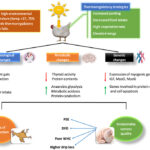The review of literature is a foundational component of scholarly research. It serves not only as a survey of existing knowledge but also as a critical analysis that shapes the direction of a new study. Understanding how to write a proper literature review—and distinguishing it from plagiarism—is crucial for maintaining academic integrity and building a solid methodological base.
1. What Is a Literature Review?
A literature review is a structured examination and synthesis of published works relevant to a specific topic or research question. It involves:
- Summarizing existing studies
- Analyzing their methodologies, findings, and limitations
- Identifying gaps in knowledge
- Establishing a theoretical or conceptual framework for the new research
It is not merely a collection of summaries, but rather a critical dialogue with existing literature that justifies the need for the current study.
2. Importance in Research Methodology
The literature review plays a vital role in shaping research methodology:
- Defining the Research Problem: By identifying gaps or inconsistencies in existing studies, the literature review helps formulate precise research questions or hypotheses.
- Choosing the Right Methods: Past studies guide the selection of research design, instruments, and analysis techniques.
- Avoiding Redundancy: Reviewing existing literature ensures the proposed study contributes original insights rather than duplicating previous work.
- Framing the Theoretical Context: It provides a framework within which new findings can be interpreted and compared.
- Establishing Credibility: A well-written review demonstrates that the researcher is knowledgeable and that the study is grounded in existing scholarship.
3. Plagiarism Versus Genuine Literature Review
A major ethical concern in writing a literature review is plagiarism, which can occur unintentionally if sources are poorly paraphrased or cited.
Plagiarism:
- Copying text directly without quotation or proper citation.
- Paraphrasing too closely without original interpretation.
- Presenting someone else’s ideas as your own.
- Using secondary sources without acknowledging the original.
Genuine Literature Review:
- Properly cites all sources using appropriate academic referencing styles (e.g., APA, MLA, Chicago).
- Synthesizes multiple sources to present an overview rather than isolated summaries.
- Offers critical insights and analysis instead of just restating what others have said.
- Demonstrates the researcher’s voice by comparing, contrasting, and evaluating existing studies.
Avoiding plagiarism is not just about citing sources—it’s about intellectual honesty and contributing meaningfully to scholarly dialogue.
4. Best Practices for Writing a Literature Review
- Start with a clear purpose: Know whether you are writing a narrative, systematic, or scoping review.
- Organize thematically or methodologically: Group studies by topic, trend, or approach rather than chronologically unless appropriate.
- Use academic databases: Rely on peer-reviewed and credible sources.
- Evaluate critically: Ask questions about reliability, validity, and relevance.
- Keep detailed notes and citations: Use reference management tools to avoid accidental plagiarism.
- Revise and reflect: Ensure your synthesis aligns with your research objectives.
Conclusion
The literature review is more than an academic requirement—it is a methodological cornerstone that informs the design, execution, and interpretation of research. Mastering it requires not only strong writing skills but also ethical discipline. Recognizing the distinction between plagiarism and a genuine review ensures academic integrity and contributes to the creation of meaningful, original scholarship.



Very informative and helpfull
24-CUVAS-0022
Great
Highly informative!
24-CUVAS-0026
Nice
24-CUVAS-020
Well summarised